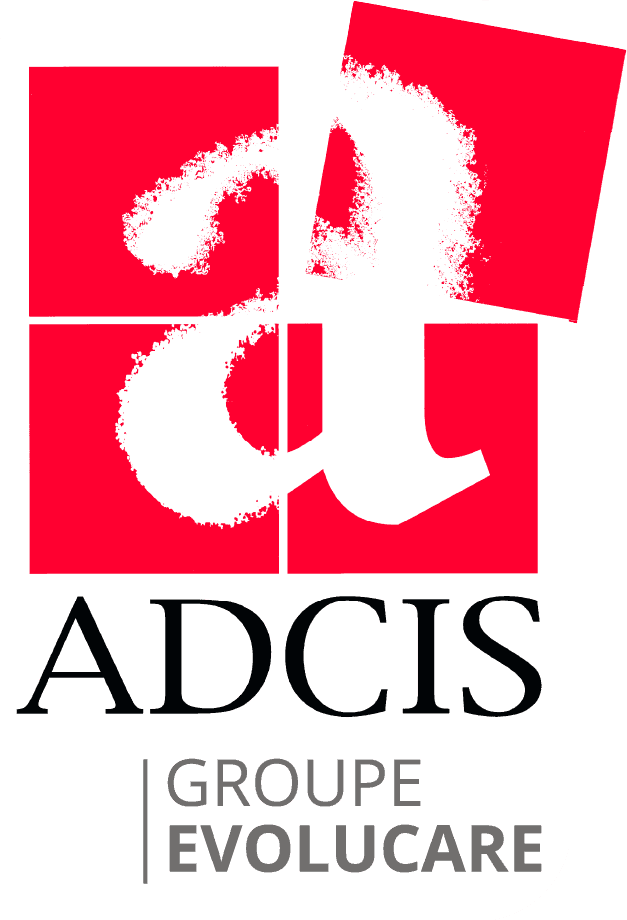DRAMATICALLY REDUCES IMAGE NOISE USING A POWERFUL KRIGING METHOD
The Kriging Extension is a highly effective tool for the removal of random acquisition noise from digital images. Its processing is based on kriging technique used in geostatistics. It was developed for imaging applications in a collaboration between the GeoSciences Research Group, a R&D laboratory at Mines ParisTech in France, and imaging software developer at ADCIS SAS. the kriging technique, widely used in the field of oil exploration, are now successfully used in the field of imaging technology to enhance the quality of digital images. Its efficiency has been particularly demonstrated on multi-band images such as electron probe micro-analyzer (EPMA) maps.
The kriging noise removal method proceeds in three steps:
1) An image variogram is generated. In case of an anisotropic structure, the anisotropy is automatically computed by fitting an ellipse to the caractericstic points of the variograms.
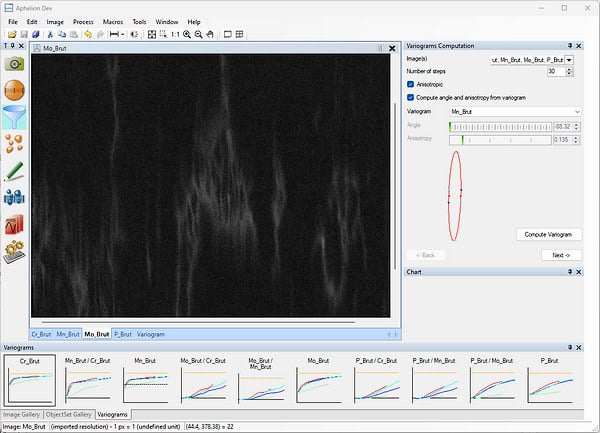
Variogram Computation
2) A fitting model (function) is automatically computed by the software and is displayed graphically. The user can then interactively adjust the fitting model to better approximate the variogram. These adjustments are made with a linear combination of functions selected from a list provided in the Kriging Extension. Slider bars enable the user to fine-tune the selected functions to improve the model match to the computed variogram.
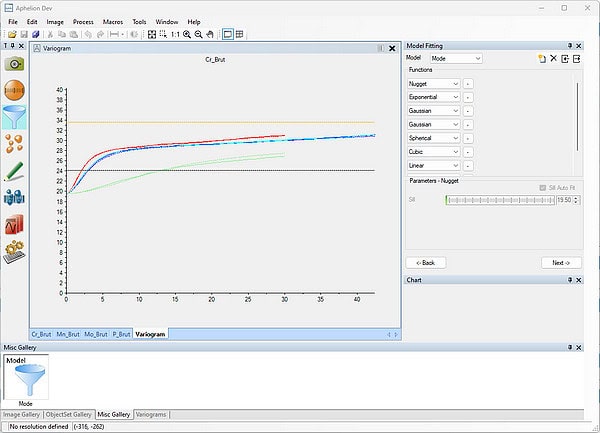
Model Fitting
3) The kriging process uses the fitting model to generate the noise-filtered image(s).
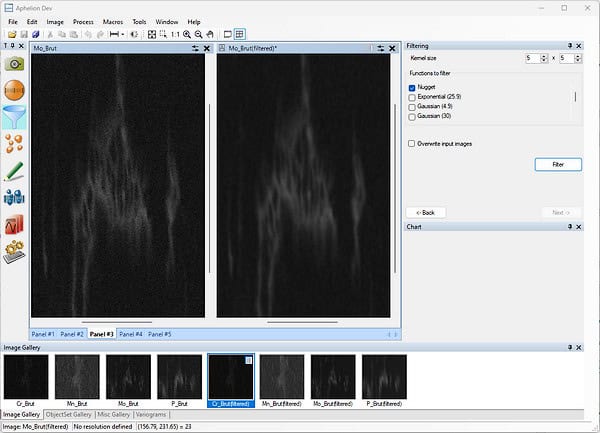
Filtering
The Kriging Extension is an optional extension of Aphelion™, fully integrated in the Aphelion Dev graphical user interface.
Application Domains
Kriging Extension supports models for both isotropic and anisotropic variables, as well as single and multiple variables. For multivariate analysis, the selected model can be adjusted simultaneously to both the variograms and the covariograms.
Application on EPMA maps
In the field of material science, the Kriging Extension can be used on each image (map) corresponding to one trace element (i.e., stain, chrome, molybdenum, etc.). Use of this extension enabled the successful detection and quantization of trace elements on a stainless steel sample acquired with an electronic microprobe.
It may also be used to filter another component of an image different from the background noise.

Input images and computed variograms
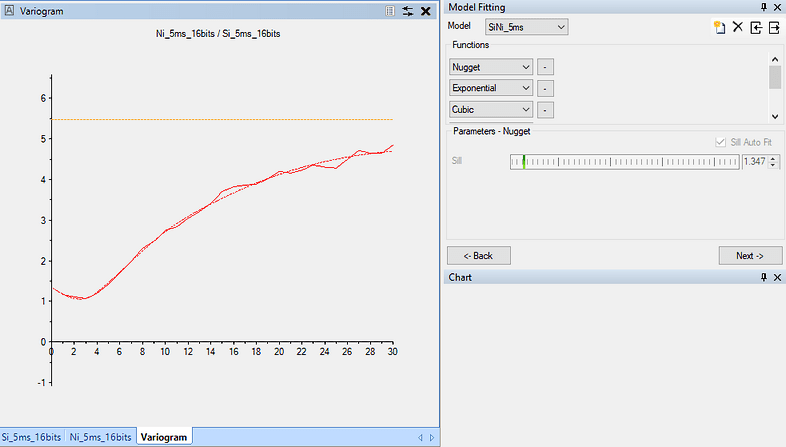
Model fitting
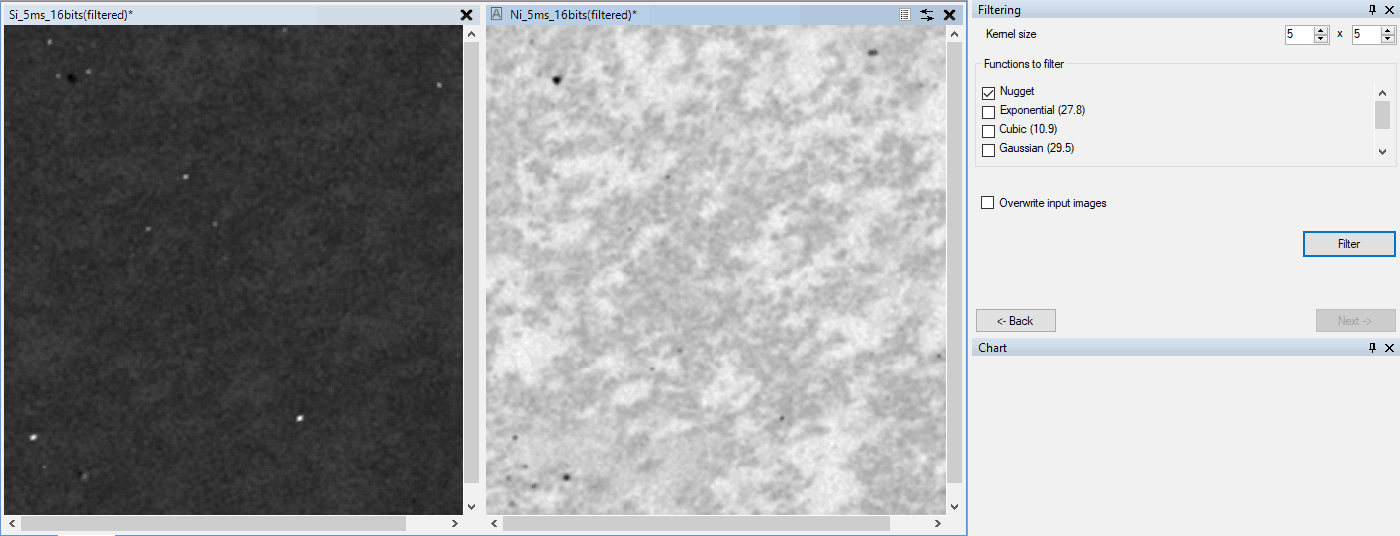
Image filtering based on the Kriging method
Main benefits of the Kriging Extension
- Effectively removes acquisition noise from digital images
- Standard models are provided (e.g., Gaussian, nugget effect, etc.)
- Automatic generation of models to help the user
- User tools for refining model parameters to enhance fitting to actual data
- Mono and multivariate analysis, with multiple directions
- Can improve the focus of an image acquired from an unfocused device
